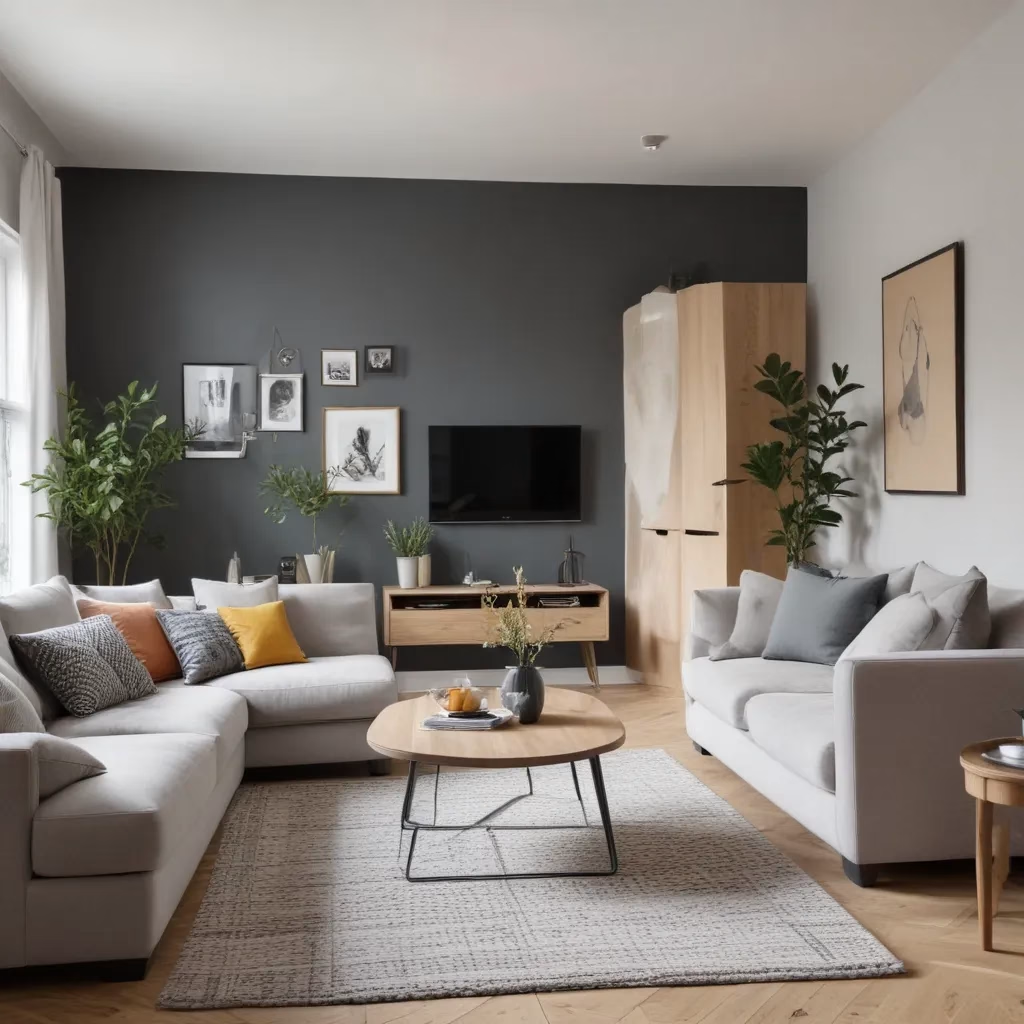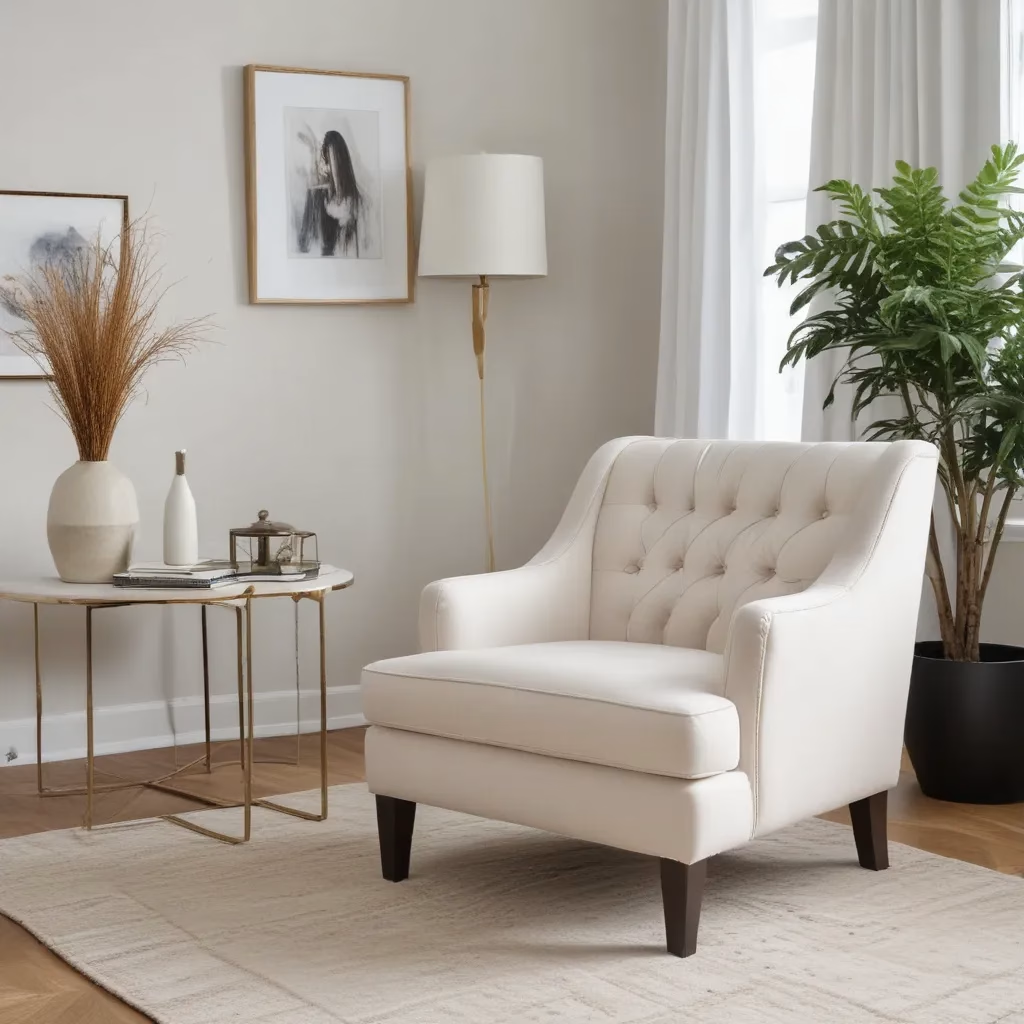
The Evolution of Sofa Design in the UK
As we approach September 2024, the UK furniture landscape continues to evolve, reflecting changing lifestyles and aesthetic preferences. Sofas, as the centrepiece of many living spaces, have undergone significant transformations in recent years. This shift is not merely about style; it’s a response to the changing needs of UK households, where comfort and functionality are increasingly paramount.
The contemporary British home has become a multi-functional space, serving as an office, entertainment centre, and relaxation zone. This has led to a demand for sofas that can adapt to various uses throughout the day. Modular designs have gained popularity, allowing homeowners to reconfigure their seating arrangements based on their immediate needs.
In terms of aesthetics, there’s a noticeable trend towards cleaner lines and minimalist designs. However, this doesn’t mean a compromise on comfort. UK consumers are seeking sofas that offer both visual appeal and superior comfort, often opting for deeper seats and plush cushioning that invite relaxation after a long day.
Selecting the Perfect Sofa Material
The choice of sofa material plays a crucial role in both the appearance and longevity of the furniture. In the UK market, we’re seeing a range of options gaining traction, each with its own set of benefits:
Leather
Leather remains a popular choice for its durability and timeless appeal. It’s easy to clean and develops a unique patina over time, adding character to the piece. However, it’s important to note that leather requires regular maintenance to prevent cracking and fading.
Velvet
Velvet has seen a resurgence in popularity, particularly in jewel tones that add a touch of luxury to living spaces. It’s soft to the touch and visually striking, but may require more careful cleaning and maintenance.
Performance Fabrics
These innovative materials are designed to resist stains, fading, and wear. They’re particularly popular among families with young children or pets, offering practicality without sacrificing style.
Natural Fibres
Materials like linen and cotton are favoured for their breathability and eco-friendly properties. They offer a relaxed, casual look that fits well with many contemporary UK interiors.
To help you compare these options, here’s a quick reference table:
| Material | Durability | Maintenance | Style | Best For |
|---|---|---|---|---|
| Leather | High | Moderate | Classic | Long-term investment |
| Velvet | Moderate | High | Luxurious | Statement pieces |
| Performance Fabrics | High | Low | Versatile | Family homes |
| Natural Fibres | Moderate | Moderate | Casual | Eco-conscious consumers |
When selecting a material, consider your lifestyle, the room’s usage, and your long-term furniture goals. A family with young children might prioritise durability and ease of cleaning, while a couple looking to create a sophisticated living room might opt for the luxurious feel of velvet.
Comfort-Focused Design Trends
Comfort has become a top priority for UK sofa buyers, with manufacturers responding by incorporating innovative features into their designs:
Deep-Seated Comfort
Sofas with deeper seats are gaining popularity, allowing users to fully relax and even curl up comfortably. This trend aligns with the increasing desire for furniture that supports both sitting and lounging.
Ergonomic Support
Many new sofa designs incorporate ergonomic principles, offering enhanced lumbar support and carefully angled backrests. This is particularly appealing to those who spend extended periods sitting, whether working from home or enjoying leisurely activities.
Customizable Firmness
Some manufacturers now offer sofas with adjustable firmness levels, allowing users to personalize their seating experience. This can be particularly beneficial in households where family members have different comfort preferences.
Temperature Regulation
Advanced upholstery technologies are being used to create sofas that help regulate body temperature, ensuring comfort in both warm and cool seasons. This feature is particularly appreciated in the UK’s variable climate.
Integrating Your Sofa into Your Interior Design
A sofa is more than just a standalone piece; it’s an integral part of your overall interior design. Here are some tips for seamlessly incorporating your new sofa into your living space:
Colour Coordination
While neutral tones remain popular for their versatility, we’re seeing a trend towards bolder colour choices in UK homes. When selecting a sofa colour, consider the existing palette of your room. A vibrant sofa can serve as a focal point in a neutral space, while a more subdued tone can provide balance in a colourful room.
Texture Play
Mixing textures is an effective way to add visual interest to your living area. If you opt for a smooth leather sofa, consider pairing it with plush throw pillows or a textured area rug to create contrast and depth.
Scale and Proportion
Ensure your sofa is appropriately sized for your room. A too-large sofa can overwhelm a small space, while a small sofa may look out of place in a spacious room. Measure your space carefully and consider the flow of traffic around the furniture.
Complementary Pieces
Select side tables, coffee tables, and accent chairs that complement your sofa’s style. For a cohesive look, choose pieces that share similar lines or materials. Alternatively, create an eclectic feel by mixing different styles thoughtfully.
Sustainable Sofa Options
Sustainability is increasingly important to UK consumers, and this trend is reflected in sofa manufacturing and design:
Recycled Materials
Some manufacturers are now using recycled materials in their sofa construction, from the frame to the upholstery. This can include recycled wood, metals, and fabrics made from recycled plastics.
Non-Toxic Treatments
There’s a growing demand for sofas treated with non-toxic, environmentally friendly flame retardants and stain repellents. These options are particularly appealing to eco-conscious consumers and those with sensitivities to chemical treatments.
Long-Lasting Design
Investing in a high-quality, durable sofa is itself a form of sustainability. Look for pieces with solid construction and timeless design that will stand the test of time, reducing the need for frequent replacements.
Local Manufacturing
Choosing a sofa manufactured in the UK can reduce the carbon footprint associated with transportation. Many local manufacturers are also committed to sustainable practices and materials sourcing.
Technology Integration in Modern Sofas
As our homes become smarter, so too do our sofas. Here are some technological advancements making their way into UK living rooms:
Built-in Charging Stations
Many modern sofas now come equipped with USB ports and wireless charging pads, allowing users to conveniently charge their devices while relaxing.
Smart Fabric
Innovative textiles that can change temperature or even colour are being developed. While still in the early stages, these technologies promise to revolutionize the way we interact with our furniture.
Voice-Activated Adjustments
Some high-end sofas now offer voice-activated controls for reclining functions or built-in massage features, integrating seamlessly with smart home systems.
Health Monitoring
Emerging technologies allow sofas to monitor vital signs such as heart rate and breathing patterns, potentially offering health insights or alerting users to potential issues.
Care and Maintenance for Longevity
Proper care and maintenance can significantly extend the life of your sofa. Here are some tips to keep your furniture looking its best:
Regular Cleaning
Vacuum your sofa weekly to remove dust and debris. For fabric sofas, consider professional cleaning once or twice a year, depending on usage.
Prompt Stain Treatment
Address spills immediately to prevent staining. Use appropriate cleaning methods based on your sofa’s material and the type of stain.
Rotation and Fluffing
Regularly rotate cushions and fluff pillows to ensure even wear and maintain shape.
Protection from Sunlight
Position your sofa away from direct sunlight or use window treatments to prevent fading and material degradation.
Professional Repairs
Address any tears, loose threads, or structural issues promptly, preferably with professional repair services to maintain the integrity of your sofa.
Choosing the Right Sofa for Your Space
Selecting the perfect sofa involves considering various factors beyond just style. Here’s a guide to help you make an informed decision:
Room Size and Layout
Measure your space carefully, considering not just the dimensions of the room but also doorways and staircases for delivery. Leave enough space around the sofa for comfortable movement.
Usage Patterns
Consider how you’ll primarily use the sofa. If it’s for daily TV watching, prioritize comfort and durability. For a formal living room, you might focus more on aesthetics.
Lifestyle Factors
If you have pets or young children, opt for durable, easy-to-clean fabrics. If allergies are a concern, leather or synthetic materials might be preferable to natural fibres that can trap allergens.
Longevity vs. Trend
Decide whether you want a timeless piece that will last for years or if you’re open to replacing your sofa as trends change. This can influence your choice of style and investment level.
Comfort Test
Always test a sofa in person if possible. Sit, lie down, and spend time on it as you would at home. Comfort is highly personal, and what looks good might not feel good.
The Future of Sofa Design in the UK
Looking ahead, we can anticipate several trends shaping the future of sofa design in the UK:
Adaptable Designs
As living spaces continue to serve multiple functions, we’ll likely see more sofas with modular designs or built-in storage options, allowing for greater flexibility in home layouts.
Eco-Friendly Innovation
Expect to see continued advancement in sustainable materials and manufacturing processes, with a focus on reducing environmental impact without compromising on style or comfort.
Health-Focused Features
With an increasing focus on wellness, future sofas may incorporate features designed to promote good posture, reduce stress, or even monitor health metrics.
Customization Options
The trend towards personalization is likely to grow, with more manufacturers offering custom sizing, fabric choices, and modular components to suit individual needs and preferences.
Smart Integration
As smart home technology becomes more prevalent, sofas will likely become more integrated with these systems, offering enhanced functionality and convenience.
Conclusion: Creating Your Personal Haven
Choosing the right sofa is about more than just filling a space in your living room; it’s about creating a personal haven where you can relax, socialize, and feel truly at home. By considering factors such as material, design, comfort, and sustainability, you can select a sofa that not only looks great but also enhances your daily life.
Remember, the perfect sofa is one that meets your unique needs and preferences. Whether you prioritize plush comfort, sleek design, or eco-friendly materials, there’s a sofa out there that’s ideal for you. Take your time, do your research, and don’t hesitate to seek expert advice.
For more information on current sofa trends and expert buying guides, visit Sofa Spectacular. Their comprehensive resources can help you navigate the wide world of sofas and find the perfect match for your home.
Ultimately, your sofa is an investment in your comfort and your home’s aesthetic. Choose wisely, care for it well, and it will provide you with years of comfort and enjoyment, truly allowing you to sink into personalized serenity in your own living space.



